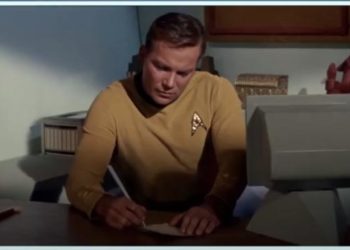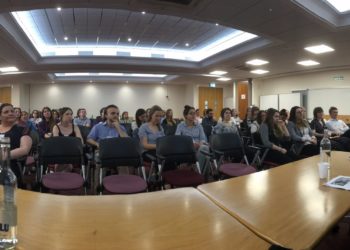It’s always fun to visit retro-futures, that is, visions of the future made during past eras that more strongly reflect those eras than they present a realistic vision of what ended up happening. The video below comes from 1987, interesting because the company was just on the edge of their darkest days. 1984 had seen the introduction of the Macintosh, but since then, both Steve Jobs and Steve Wozniak had left the company. As seen in the video, Apple was led by CEO John Sculley, and his decisions brought about flagging sales and the rise of the PC, with Jobs eventually returning to save the company.
But from the viewpoint of 1987, just after Apple’s 10th anniversary, all was rosy, and this tongue-firmly-in-cheek video takes a fictional look at Apple at 20. Some things they got right — the use of satellites for communication for example, or the idea of voice interfaces for computers (though Siri and other assistants were many years still off in the future). Their depiction of Apple’s dominance of the business world in 1997 as well as a future of little beige boxes with tiny screens were definitely failed visions. Also, the Vista Mac II, a computer in wraparound sunglasses, is pretty glorious.
1997, in fact saw the return of Steve Jobs and the introduction of the candy-colored iMac. And one of the better jokes in the video is the completely absurd financial figures they state for Apple’s revenue, rising from $5 Billion to an incomprehensible $20 Billion. In fact, Apple’s revenue for 1997 was $1.6 Billion, and in those dark days, one wonders how they would have reacted to a prediction of $266 Billion in revenue, as was seen last year.



